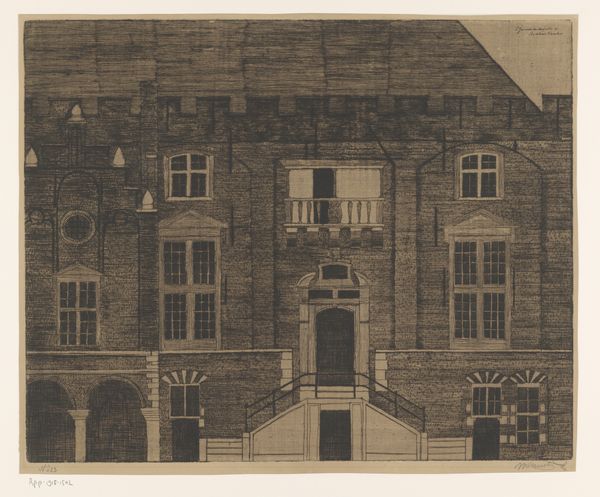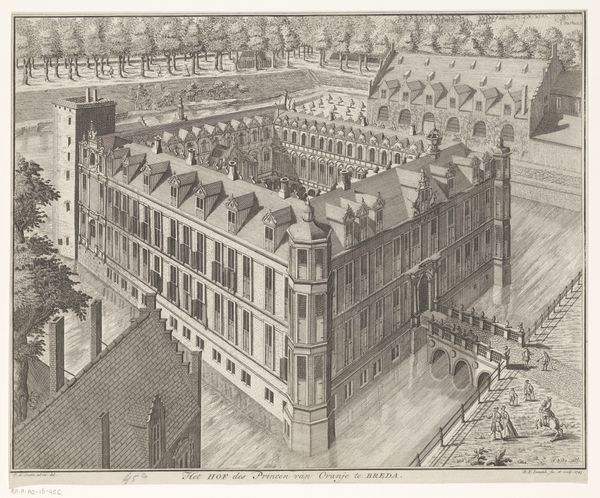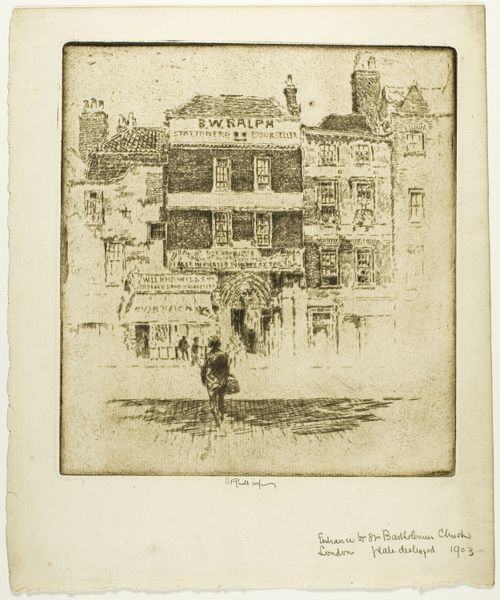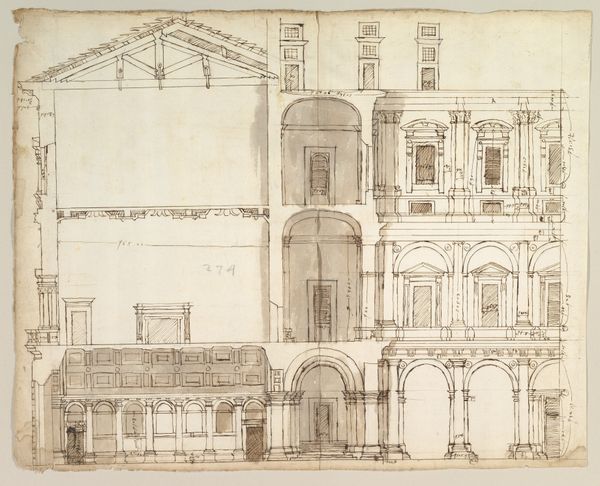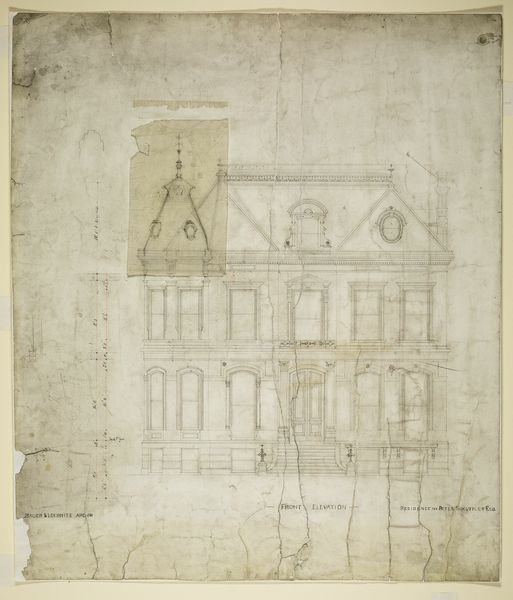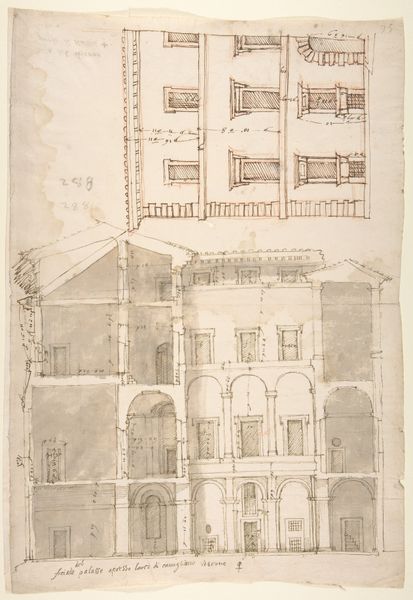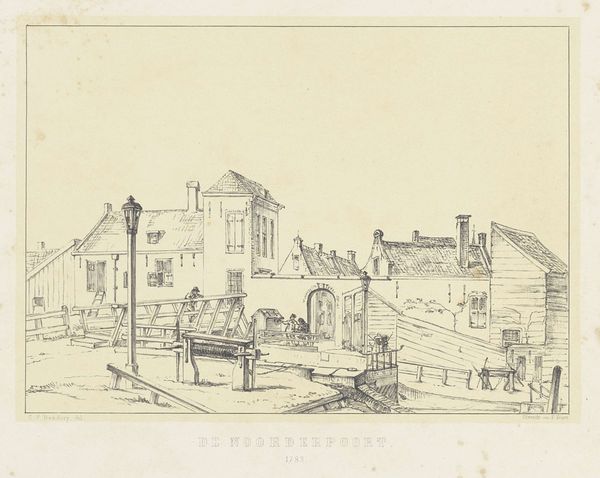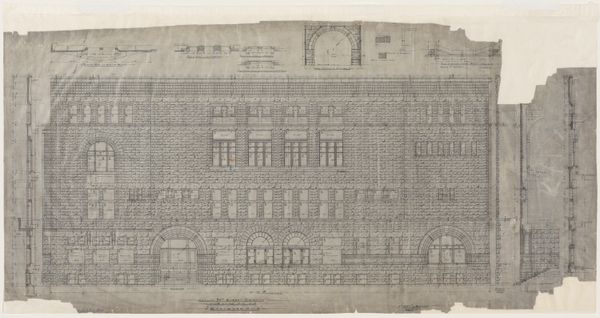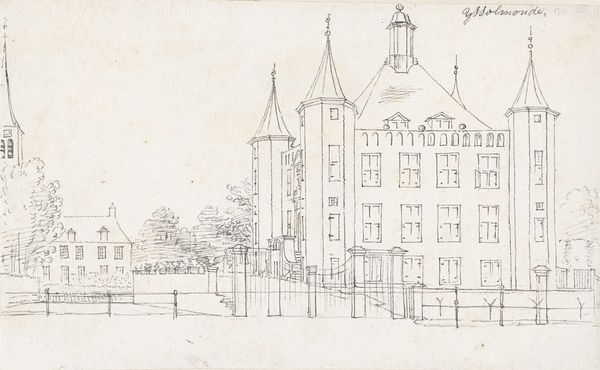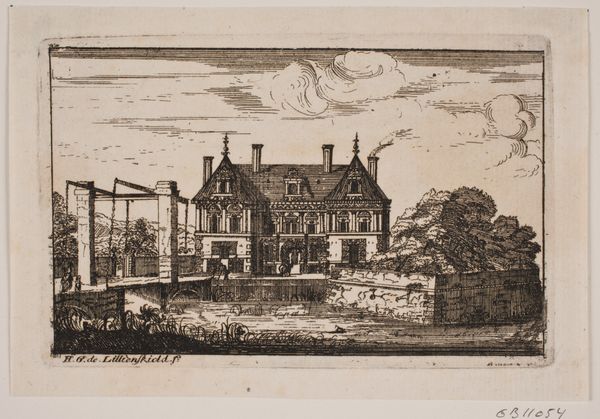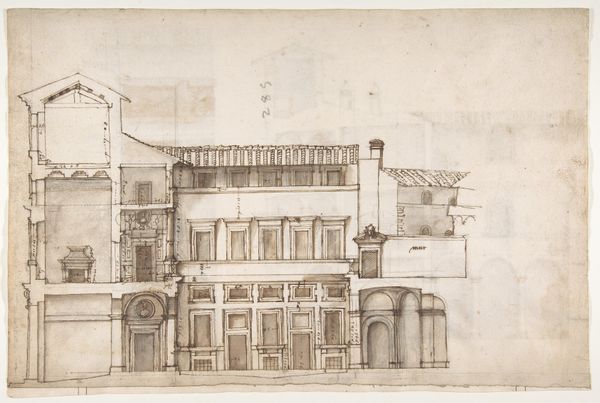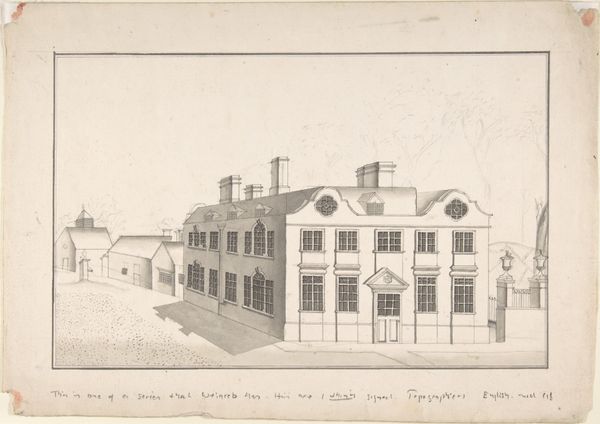
Double House for Mr. Straus, Perspective View 1883
0:00
0:00
drawing, paper, ink, pencil, architecture
#
drawing
#
16_19th-century
#
neoclassicism
#
paper
#
ink
#
pencil
#
cityscape
#
architecture
Dimensions: 47.3 × 54.6 cm (18 5/8 × 21 1/2 in.)
Copyright: Public Domain
Curator: The “Double House for Mr. Straus, Perspective View,” conceived in 1883 by Adler and Sullivan, Architects, presents a compelling architectural drawing executed in ink and pencil on paper. What strikes you upon first seeing it? Editor: It's austere, yet inviting. The intricate detailing against the cloudy, almost turbulent sky creates an intriguing visual tension. Curator: Indeed. I am immediately drawn to the methods and means of representing this architectural concept. Note how the very materiality of pencil and ink work to delineate class structures. Mr. Straus would have commissioned a rendering such as this to solidify his status within the upper echelons of Chicago society. The means of production – drawing, paper, and ink – are as essential as the intended architectural space. Editor: Precisely. The neoclassicism that defined architectural principles during that time dictate that the composition adhere to visual elements, such as the symmetry achieved by duplicating design, to create a calming stability in its façade. Also, the delicate balance of the natural with architectural rigidity, trees and humans as details within the architecture itself, creates a very pleasing harmony. Curator: The figures become ciphers. Notice their lack of individual expression; the building becomes the main event. Think too about how this piece, at its moment of creation, was meant as a sales proposal of sorts, where the idea of owning this “Double House” also suggests an implicit endorsement of an upper-middle-class aspiration and promise of security. The value it carries transcends purely aesthetic judgment. Editor: I see it too, as the building blocks within this 19th-century aesthetic value structure; materials, shape and spatial positioning convey meaning. Yet, the building itself serves as more than status or economic structure when observing details of each window and stone to discover a wealth of minute elements working in tandem to express balance through shape, scale and composition. Curator: A fascinating balance of form and function, class, consumption and artistic statement, I’d say. Editor: I agree. A complex tapestry woven into a single image through an exquisite balancing act!
Comments
No comments
Be the first to comment and join the conversation on the ultimate creative platform.
